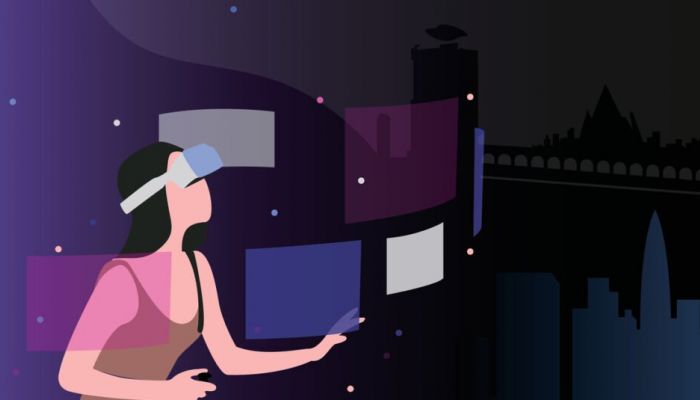
Metaverse, Since Facebook relaunched as Meta on October 28, 2021, the hazy concept that inspired the new moniker has been a hot topic of debate.
While it may appear that the metaverse is the result of Meta’s unbridled desire, this is not the case. Some say that the metaverse described by Mark Zuckerberg during his Connect 2021 keynote already exists, while others see it as the next phase of the internet known as Web3 or Web 3.0.
That is due, in part, to the fact that the metaverse means different things to different individuals, but it is also due to the fact that the lines between the virtual world and reality have grown blurred beyond recognition.
What Exactly Is the Metaverse, and Where Did the Idea Come From?
Neal Stephenson’s dystopian cyberpunk novel Snow Crash is credited with coining the phrase “metaverse.” The novel was published in 1992 and is considered a canon of the genre, along with William Gibson’s Neuromancer, which describes the matrix, a virtual reality dataspace.
In Snow Crash, the metaverse is a 3D virtual reality realm accessed by personal terminals and virtual reality goggles similar to the Oculus Quest and other VR headsets. This 3D area appears to users as an urban setting built along a single hundred-meter-wide street, the Street. Stephenson says:
The Street, like every other location, in Reality, is undergoing construction. Developers can create their own small roadways that connect to the main one. They can construct buildings, parks, and signs, as well as things that do not exist in Reality, such as massive hovering overhead light shows, unique neighborhoods where three-dimensional spacetime restrictions are ignored, and free-combat zones where people can go to kill each other.
If Stephenson’s vision of the metaverse appears familiar, it’s because many of its qualities are shared by massively multiplayer online games (MMOGs, or more colloquially, MMOs). Users in Second Life (launched in 2003) can, for example, build realistic avatars, interact with other players, construct virtual products, possess virtual property, and exchange goods and services.
Second Life and other virtual worlds are examples of protometaverses. Why is there a prefix? Because they exist in isolation, each as a virtual island whose residents and virtual assets never leave. Mark Zuckerberg’s vision for the metaverse isn’t some great virtual experience; it’s the next iteration of the internet.
“We’ve progressed from desktop to web to mobile, from text to photographs to video.” “However, this is not the end of the road,” Zuckerberg says in a recent letter to his workers. “The next platform will be even more immersive—and embodied internet in which you are immersed in the experience rather than simply viewing it.” This is known as the metaverse, and it will have an impact on everything we create.”
Is the Metaverse already present?

Is the Metaverse already present
If the metaverse is to become an embodied internet, it must have characteristics that distinguish it from isolated virtual reality experiences such as Second Life.
Matthew Ball, a venture capitalist, discusses them on his website:
The metaverse is a massively scaled and interoperable network of real-time rendered 3D virtual worlds that can be experienced synchronously and persistently by an effectively infinite number of users with an individual sense of presence, as well as data continuity, such as identity, history, entitlements, objects, communications, and payments.
For greater understanding, let us list the metaverse’s properties:
- Massively scaled
- Real-time rendered
- 3D virtual worlds
- Interoperable
- Synchronous
- Continuity of data
- Persistent
- Unlimited number of users
- The individual sense of presence
A Futuristic Retail Example of the Metaverse
In practice, the metaverse will exist when a user can enter a massive virtual shopping mall that can accommodate as many people as the virtual space allows, buy a unique digital item, and then sell the same digital item a few weeks later inside a completely different virtual world—or possibly on Twitter, eBay, or OpenSea.
Some may object, saying, “Wait a minute, I’ve watched this movie.”
The film Ready Player One, based on Ernest Cline’s book of the same name, which was published by Random House in 2011, was directed by Steven Spielberg and maybe the best visual representation we have right now of what the metaverse could conceivably look like.
The movie, on the other hand, has some basic deviations from expert perspectives of the soon-to-come metaverse, such as the fact that there is only one major platform in the movie, the Oasis, that makes up the metaverse developed by the fictional game business Gregarious Games. Another significant distinction is the primary usage of VR hardware to engage in the movie’s portrayal of the metaverse, although some experts feel VR will have less overall use than AR hardware (not emphasized in the movie).






